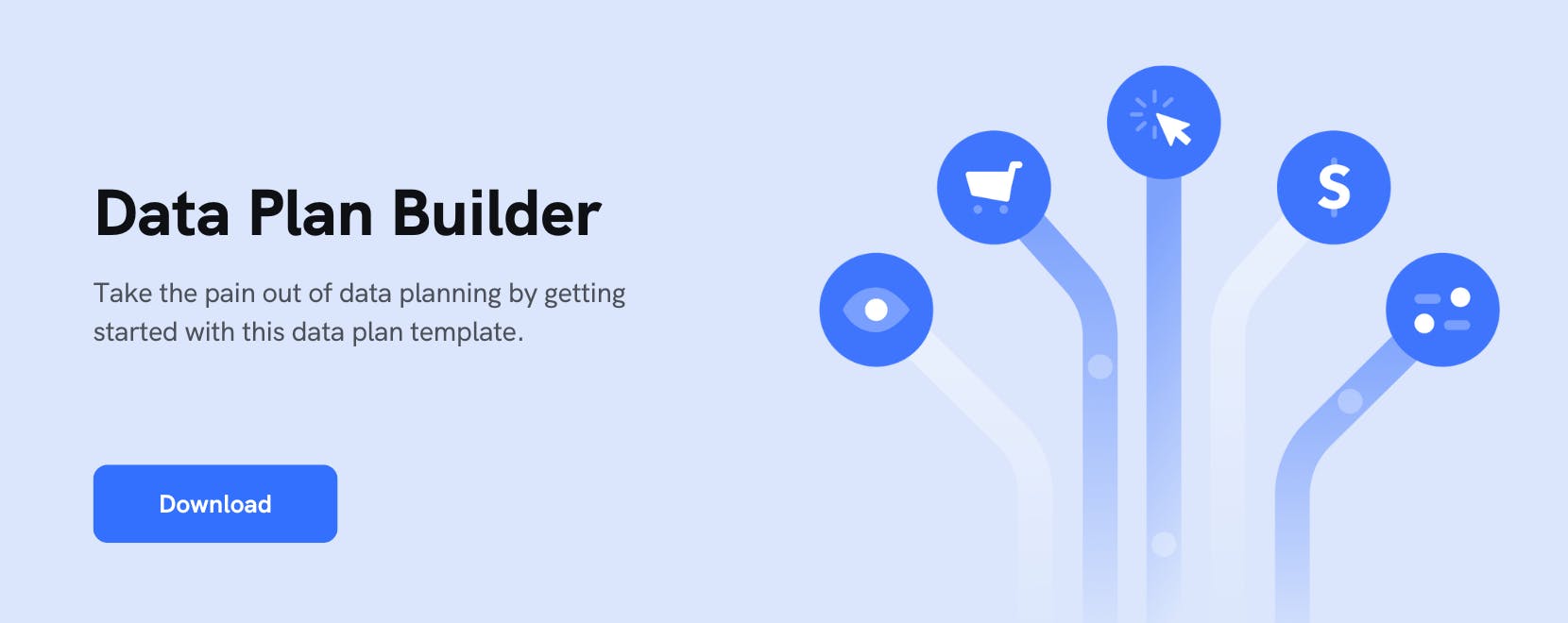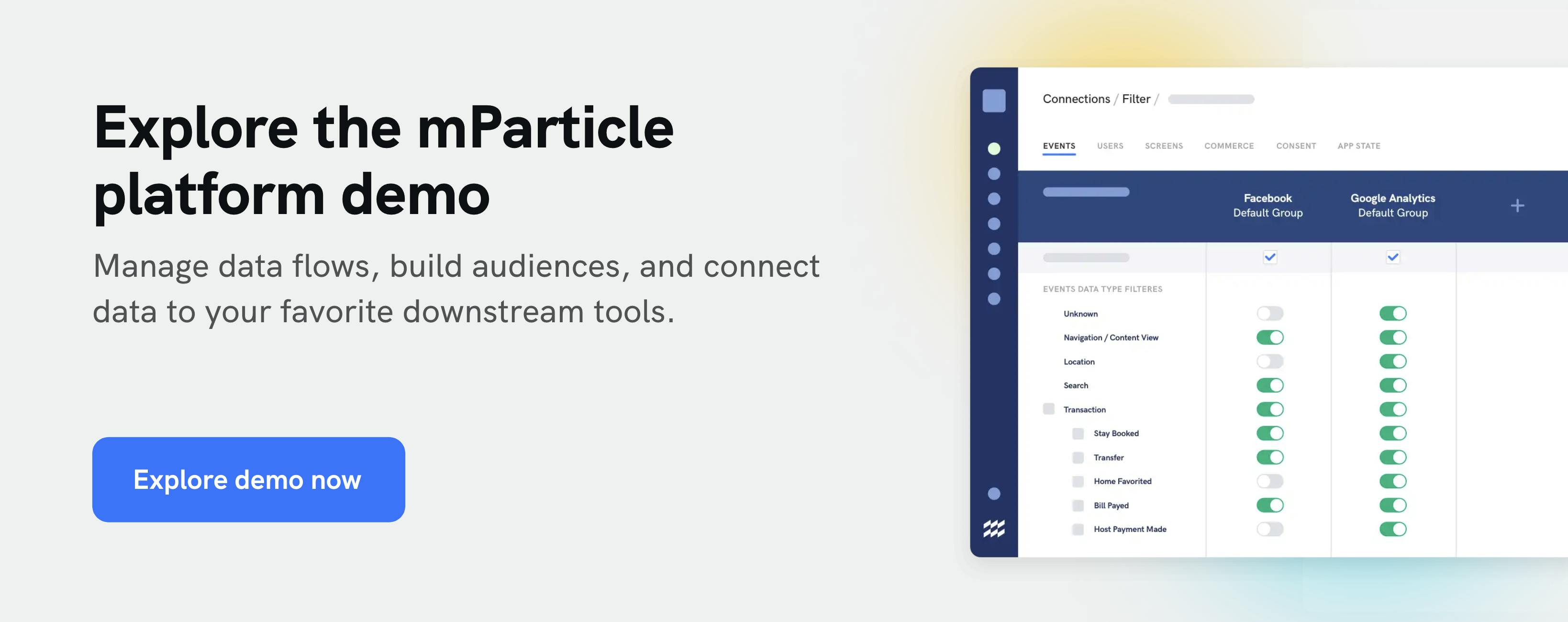Maximize the ROI of your MarTech stack with this six-step checklist
In today’s MarTech landscape, there is no shortage of tools you can use to engage with your customers and deliver personalization. But adopting tools alone by no means guarantees improved business outcomes. Here is a simple checklist you can use to increase the ROI of your MarTech stack.

Marketing teams are swimming in a sea of tools that can be used to communicate with customers and understand engagement. However, adopting these platforms alone by no means guarantees that you will translate your MarTech investment into revenue. Data silos, poor data quality, and manual data wrangling consistently impede success at scale. And in today’s macroeconomic environment, there’s no room for shelfware—MarTech owners are under more pressure than ever to demonstrate the ROI of their tech stack.
So what’s the secret to unlocking the value of your MarTech stack?
While there is no silver bullet that will immediately transform your data practice into a lucrative revenue machine, we’ve created this simple checklist to help you wield your selected MarTech solutions more effectively and generate more revenue as a result.
✅ Create a 360-degree view of the customer
Consider this scenario. You browse an eCommerce website, exploring several different products. At checkout, you complete a purchase and take the time to create an account. For the rest of the week, however, you continue to receive emails recommending the exact product you just purchased. You find this frustrating and unsubscribe, resulting in poor email engagement metrics for the eCommerce brand.
The key to maintaining consistency of experiences across channels is having a 360-degree customer view that stays up-to-date continuously, and ensuring that those profiles are available across all the tools in your stack.
Resolving data from across channels to unified customer profiles requires having an identity resolution process that can accomplish several steps:
- Pick an identifier on an incoming event, and look for a match on existing profiles
- Merge this new data into the correct profile if a match is found
- Create a new customer ID for the event if no match is found
With these functions in place, you can unify a customer’s latest engagements to their past activity, consent preferences, product interests, and more. And by making this 360-degree view available across all the tools in your stack, you can deliver more relevant customer experiences across channels and generate more revenue from MarTech use cases.
✅ Align on a centralized data plan
Tracking the numerous ways in which customers engage across channels throughout the buying journey can quickly become complex. Unless you have some way of keeping record of the events you’re collecting and where you’re collecting them, your data strategy can easily devolve into a chaotic jumble of inconsistent data points.
A data plan is a document that keeps teams updated on which user and behavioral events your company will collect, and where along the customer journey this data will be collected. It also specifies conventions for naming and organizing that data, and gives all data stakeholders transparency into the data strategy at any point in time.
With a single source of truth for your customer data, teams across the organization can access clean, consistent, and up-to-date data, enabling them to run more accurate reporting and deliver better personalization.
✅ Automate processes for managing consumer data privacy
For any company that leverages customer data, maintaining compliance with privacy regulations takes priority over all other aspects of data strategy. Adhering to privacy regulations is not only required by law, it is integral to your brand’s reputation among consumers—once customers perceive a lapse in a brand’s data privacy practices, consumer trust can rapidly plummet.
Managing consumer privacy manually requires teams to perform laborious workflows such as auditing customer profiles across the stack and finding and deleting profiles after an opt-out. As you scale, manual data privacy management becomes tedious at best, and error-prone at worst.
When teams have an automated solution for handling user consent management, however, they’re able to support consent preferences while also delivering campaigns at scale. This allows marketers to have greater confidence that their campaigns align with customers’ privacy preferences while also reducing ad hoc work for privacy engineering teams. Additionally, it minimizes the risk of data privacy errors, which, if they occur, can turn your entire MarTech stack into a costly liability overnight.
✅ Real-time data streaming throughout the stack
The MarTech tools we invest in are all powered by data. The effectiveness of our tools, therefore, is dictated by the quality of the data that we’re able to feed them with.
For many tools, particularly those that power real-time use cases, the speed of data processing is a major determinant of data value. As data processing becomes slower, the value of data (and therefore effectiveness of tools) decreases.
It doesn’t matter what your abandoned cart follow-up email offers if you can send it before your customer has proceeded to buy a product for your competitor. It doesn’t matter how compelling your ad is if it’s served just after a customer has opted-out of advertising from your brand.
To increase the value of your MarTech stack, it’s critical to utilize a real-time data pipeline capable of processing data throughout the data lifecycle continually. With the ability to stream data from end to end, marketers can deliver experiences in the moments that matter without having to wait on slower data delivery methods to complete. This allows teams to evolve from designing reactive experiences to designing adaptive experiences, unlocking use cases such as:
- Triggering in-app experiences when users browse specific products and services
- Instantly adding customers to suppression lists after they perform certain actions
- Sending reminders when users end sessions with items in their cart
- Personalizing experiences in one channel based on user behavior in another channel
✅ Establish an owner of customer data
When tools to collect, transform, and activate your data start proliferating, it is all too easy to end up with siloed, disconnected systems and teams. Additionally, when data systems are fractured, data quality suffers, as does the level of trust in data across the organization.
Avoiding this situation has just as much to do with people as it does technology. One strategy for maintaining cohesion is to appoint a dedicated owner, whether an individual person or a centralized customer data team, who is responsible for enabling data consuming teams to use customer data effectively. Example responsibilities include:
- Overseeing implementation and managing tools in the MarTech stack
- Establishing processes to enable data-consuming teams to effectively access the data they need
- Aligning stakeholders across the business to collaborate on data strategy
- Managing processes like identity resolution, data quality management, and consent management
✅ Leverage AI to power predictive customer experiences
Making sense of how to use data is hard, especially when you’re trying to navigate extremely large data sets. In the traditional (and still common) workflow, marketers look at existing data and hypothesize campaigns and strategies that might be effective. These heuristics can be slow, biased, and hard to scale. By teasing predictive insights out of your data with AI, however, you’re able to generate better insights than humans can alone, ultimately leading to better campaign results.
Here are some of the use cases that such a tool can place within your grasp:
- Prescriptive churn reduction: Anticipate which customers are likely to churn, and intervene before they do.
- Conversion predictions: Prioritize your advertising spend on prospects with the highest likelihood of converting.
- Intelligent in-app recommendations: Increase revenue by displaying predictive product recommendations and offers that have a high likelihood of resulting in purchases.
- Dynamic decisioning: Maximize the impact of your offers by only sending discounts and coupons to customers who have a high likelihood of converting.
By enriching your customer profiles with AI-powered insights, you can make your customer data even more valuable and impactful, and more effectively personalize customer experiences across all channels. In turn, you will drive more ROI from your existing data, tools, and people.
Small steps lead to big progress
Hopefully this checklist gave you some ideas about ways to increase the ROI of your MarTech stack. Don’t feel like you have to take on all of these things at once, however. Progress takes time and happens incrementally. As a next step, try thinking about how much room for improvement your team has in each of the areas highlighted above. Choose one, and focus on this as a growth opportunity in the coming months. Once you start seeing progress, select another area to improve, then another, and enjoy watching your business outcomes improve as you move along this path.
Additionally, it’s important to note that although all of these tips are presented independently, they are all aimed at the same goal: getting your team to view and use your MarTech stack holistically as opposed to a collection of independent tools. Each item in this checklist will help you break down data and people silos, increase collaboration across tools and functions, and turn your MarTech stack into something greater than the sum of its parts.





